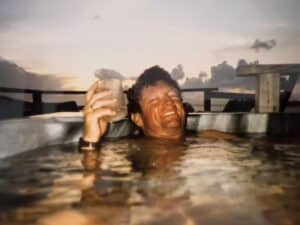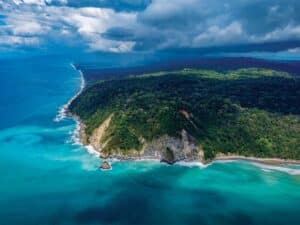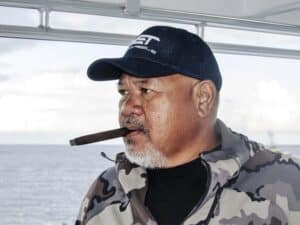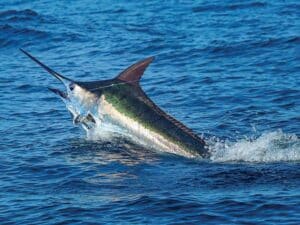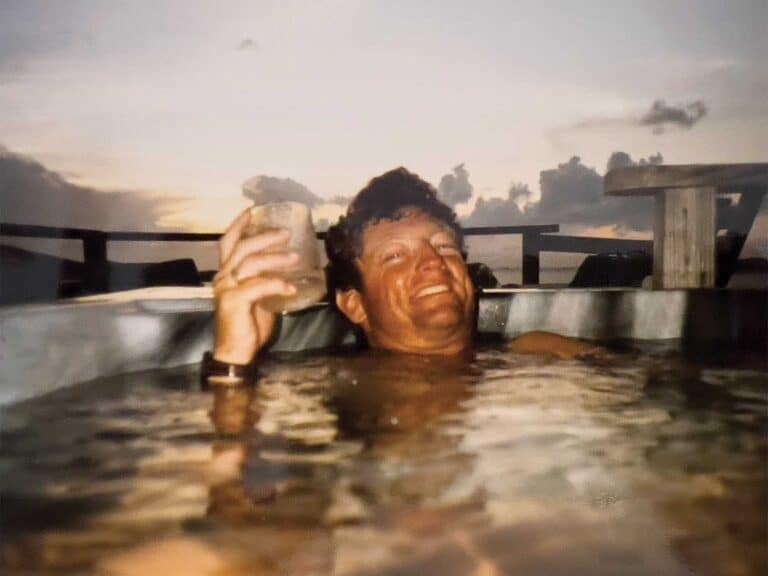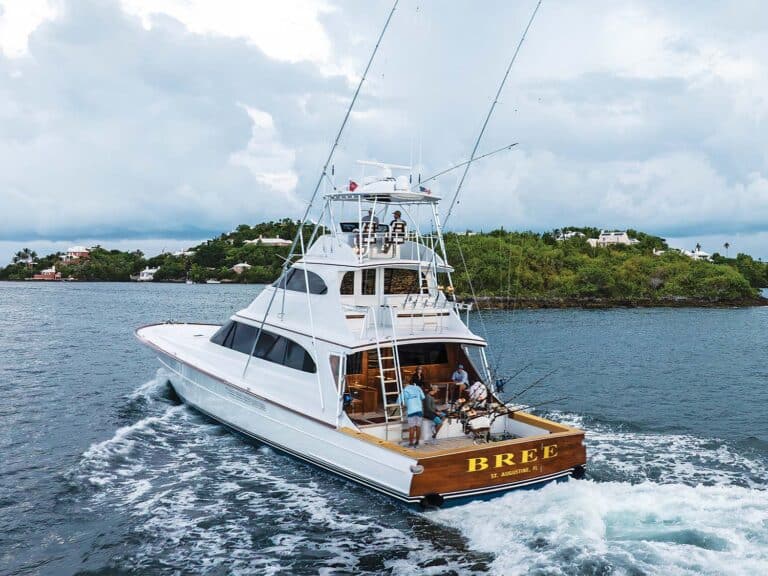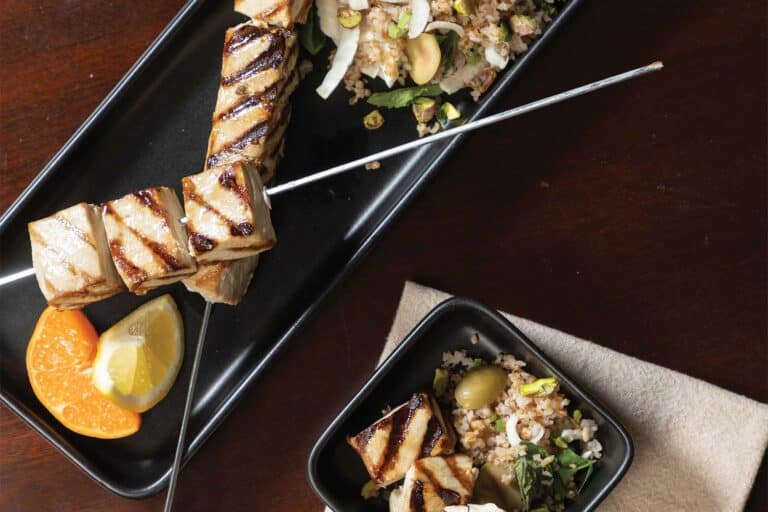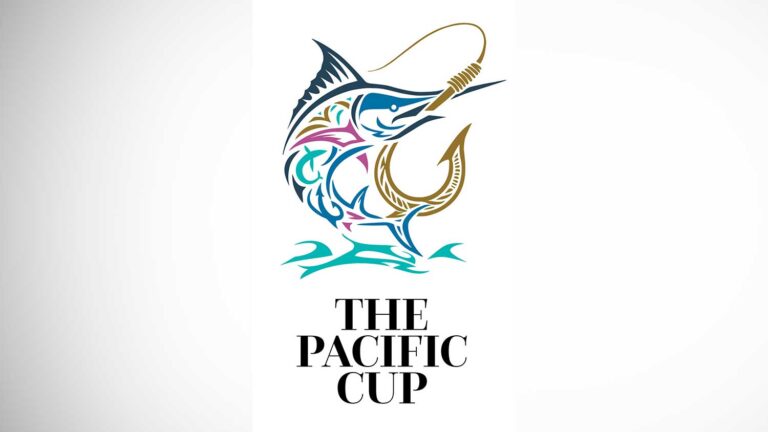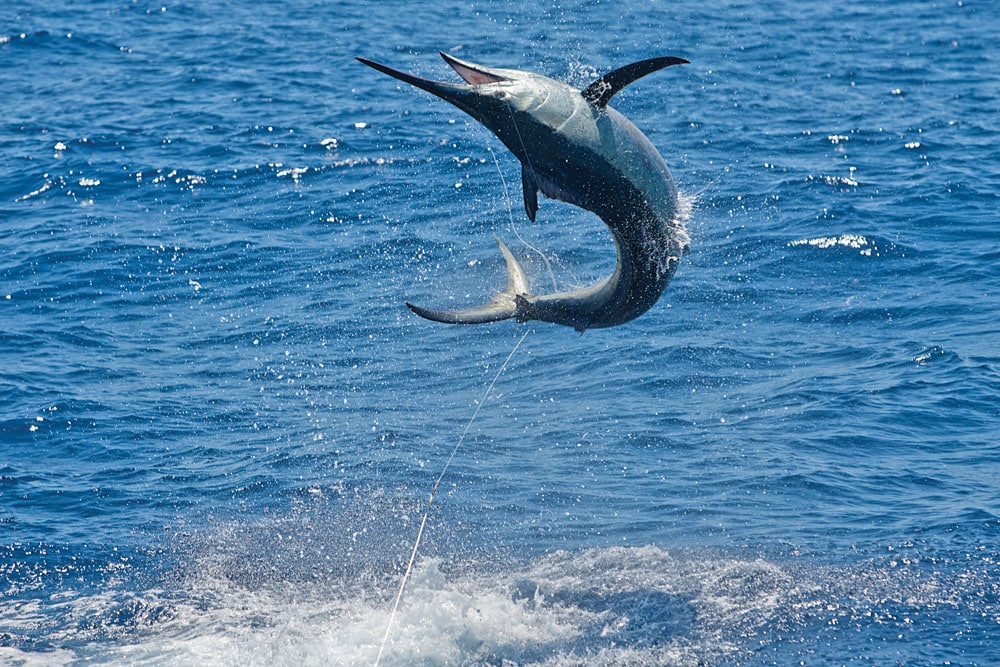
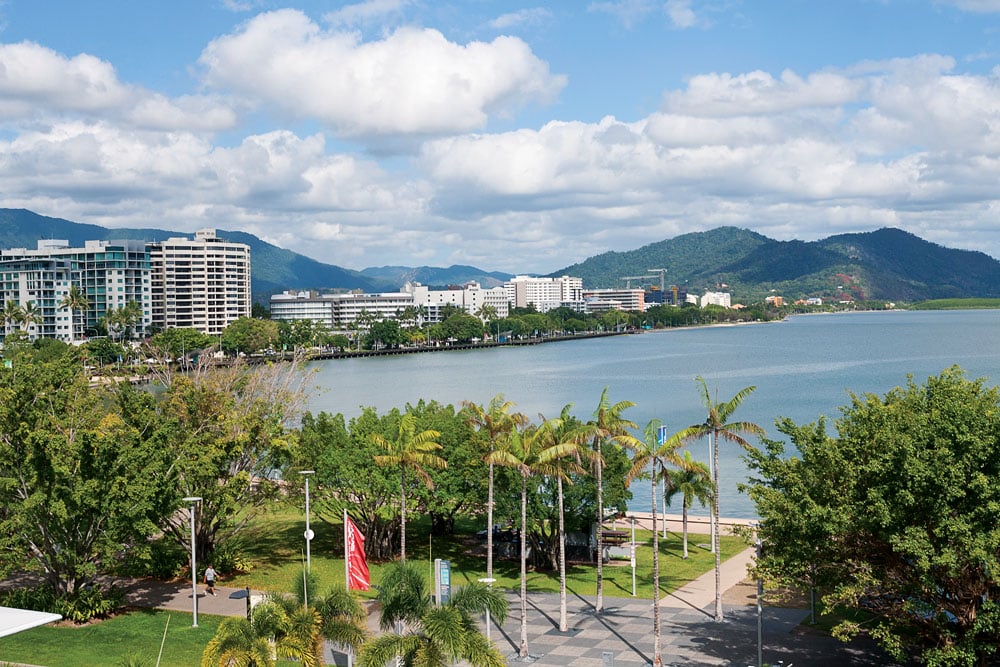
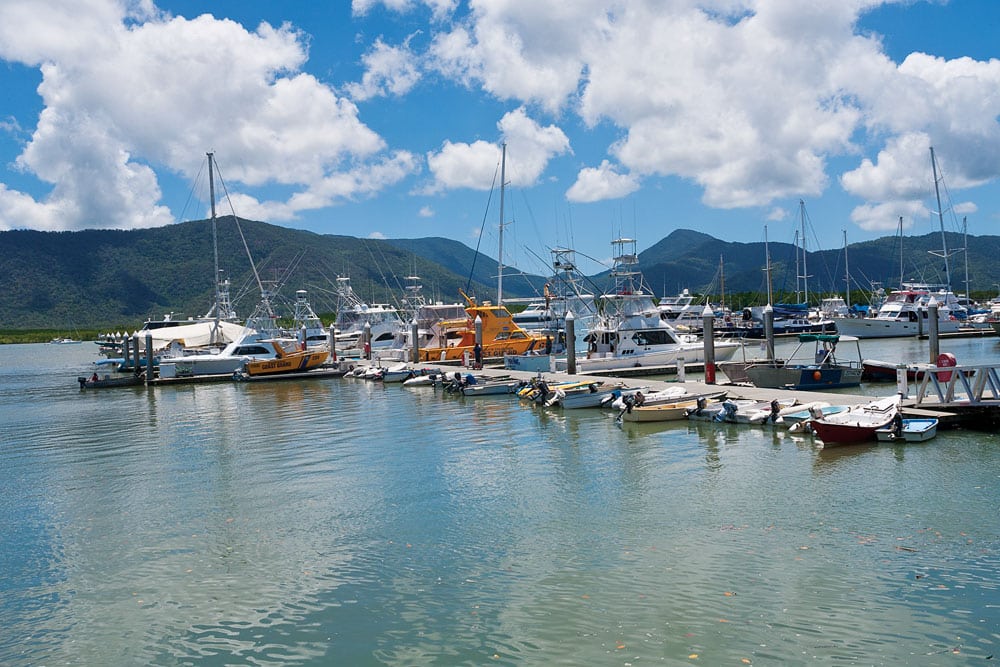
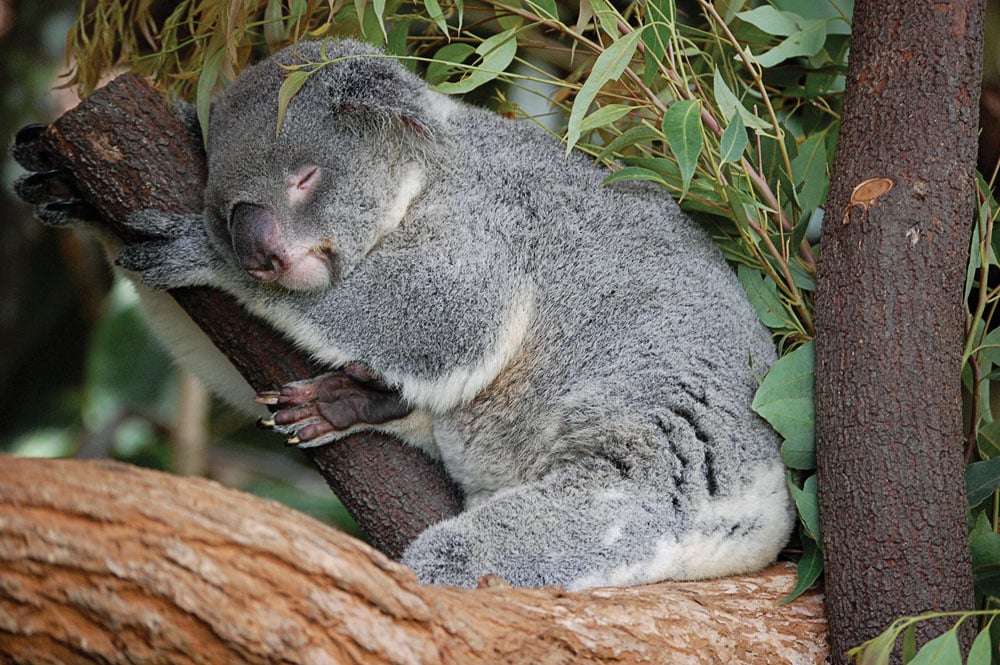
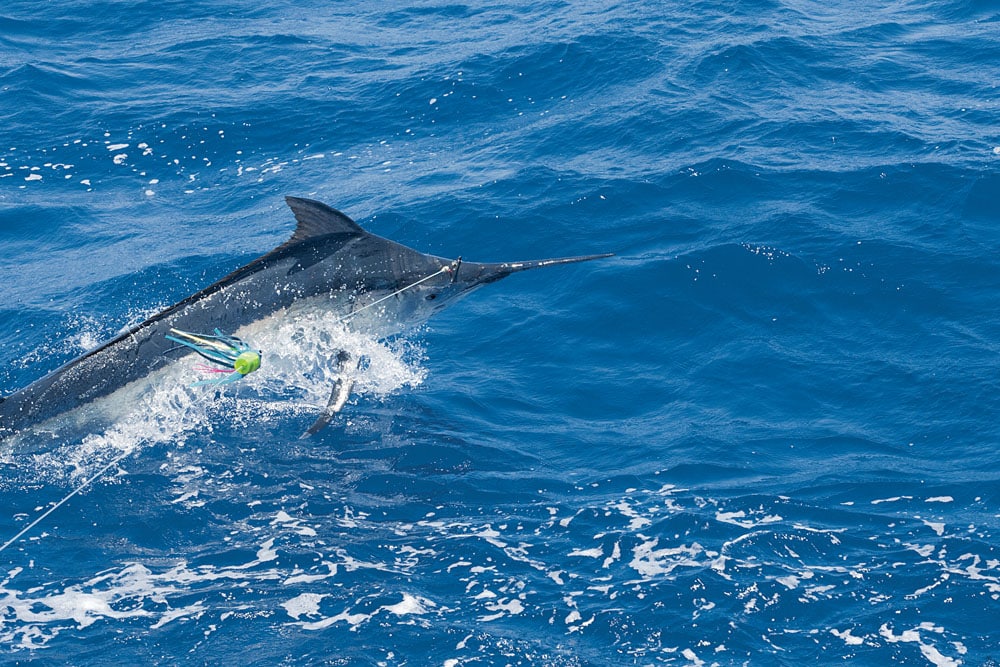
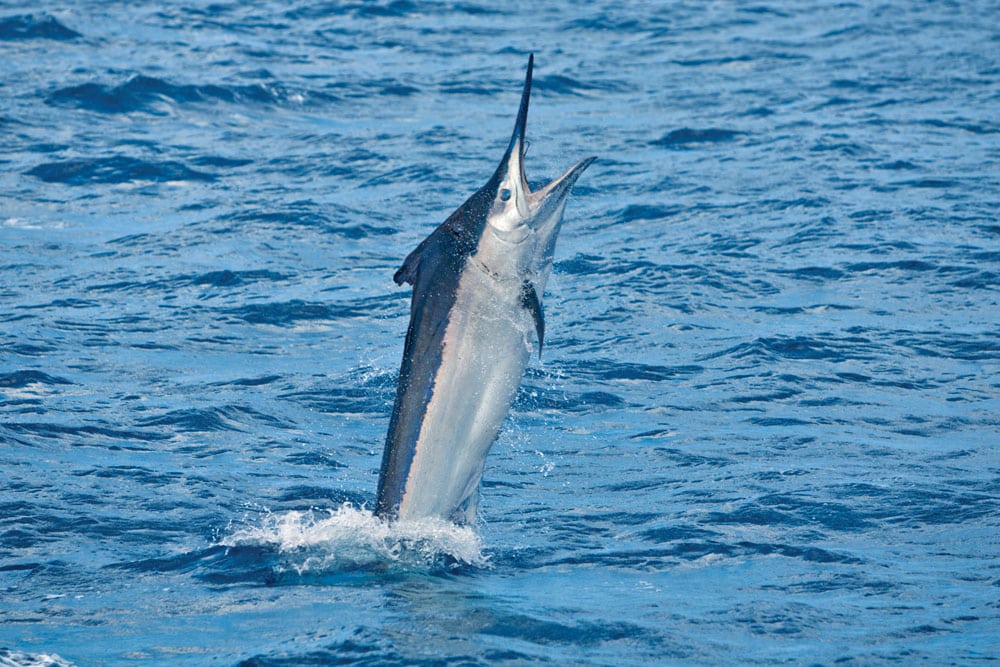
As beautiful as the many places that I travel to for Marlin magazine are, there are very few of them that I would uproot my family for and consider calling home. Cairns, Australia, is one of those special places where I could see myself living on a full-time basis.
For starters, the hot and muggy climate is a perfect match for this Florida boy, and Lord knows I already know what it feels like to live in a tourist town, since I grew up in the shadow of the Mouse at Walt Disney World in Orlando. As an added bonus, the people in Cairns are super friendly, and they speak English! Oh, and there are some pretty big marlin swimming around fairly close to the marina!
I hit the end of the 2012 season in Cairns, thanks to the generosity of my friends Ron Kawaja, Mike Curtis and Tony Berkowitz of Pelagic. They were going to head over and fish with Capt. Luke Fallon and his wife, Kelly, on the 56-foot O’Brien, Kekoa, for five days over Thanksgiving. Kawaja said that if I could get there, I could ride along and take some pictures. After a brief discussion with my wife over how many turkeys we’ve shared over the past 20 years, she told me I’d be crazy not to go. I booked the flight the next morning and anxiously awaited the day I’d get to see Cairns once again.
Growing Tourist Town
Founded in 1876, Cairns first supported the local gold-mining industry, but over the years it evolved into a tropical farming community, with sugar cane, pineapples, bananas and other tropical produce fueling the area’s growth. Today, more than 150,000 people call Cairns home, and, for many Australians and an ever-growing number of Asian tourists, it’s the gateway to far north Queensland, the Great Barrier Reef and a sizable tropical rainforest.
These tourists need places to eat and sleep before heading up into the rainforest or out to the Great Barrier Reef for an afternoon of snorkeling. The main drag is called the Esplanade, and it covers several blocks along the harbor. You’ll also find a colossal sand-bottom public-pool area right across the street from the Esplanade, lined with gorgeous people wearing skimpy bathing costumes. (At least, that’s what I’ve heard.)
As you’d expect, bars and restaurants abound, and with the heavy Asian influence, there’s no shortage of Thai, Chinese and Indonesian restaurants. I love eating bowl after bowl of noodles there.
Fishing Out of Cairns
If you travel all the way to Australia to go fishing, it’s best to book a trip with someone who will postpone disclosing the departure point from the mainland out to the reef as late as possible. This allows the charter boat to follow the bite up and down the reef, wherever it may be, in order to try to get you as close as possible to the highest concentration of fish. For example, if the fish are up in the Ribbon Reefs, it’s better to meet your charter boat in Cooktown, so you don’t have to travel far by boat to start fishing.
With that being said, Cairns is one of the best places to make day trips out to the reef and back, due to its proximity to Linden Bank. It’s only 35 nautical miles from Cairns, so you could easily fish Linden Bank and come back home each night — but it’s much more fun to stay out overnight on the boat! We actually saw Capt. John Phillips fishing his 31-foot Bertram, Chamois Free, on the bank several days, and even saw him venture out 50 miles while fishing the tuna schools one day.
Our trip occurred relatively late in the season, which goes from September through Dec. 15, so we met up with Kekoa and crew in Cairns after spending a day recuperating from the trip over. We loaded the boat with a ton of drinks and headed out to Linden Bank on the first day of fishing.
Although Kanahoee and Capt. Chris Miles had caught a 1,000-pounder on Linden the day before, we didn’t get a bite on our first day — which didn’t turn out to mean squat!
On day two, Capt. Fallon turned out wide of the bank to look for the tuna schools, and we ran across them busting the surface and drawing birds just about 18 miles from the reef, which is pretty close. It didn’t take long before we got the trip started with two yellowfin of 100-plus pounds, and then a nice fat bigeye. Kawaja caught the first marlin of the trip later in the day, a black around 700 pounds. We got a little blue later before calling lines in, and it just kept getting better from then on.
Over the five days of fishing, we caught eight blacks and two blues; a 250-pound mako on a lure; several yellowfin tuna over 100 pounds; a bigeye tuna; and a nice wahoo. The blacks, including that behemoth you see on the cover of this magazine, weighed between 300 and 900-plus pounds. We even had several close encounters with whale sharks, and Kawaja was able to jump in and snap a few pictures.
I didn’t take a close count, but I believe that most of the fish were caught on lures, and several came up on a homemade mudflap teaser. One fish we didn’t see flat out ate the huge teaser, and only let go after a very tense bout of tug of war that I thought was going to end up bending the outrigger. When the fish finally let go, the teaser came flying out of the water like it was shot out of a cannon!
The last time I was in Australia, we ended the day with a doubleheader of a 900 and a 500, and I never thought I’d see something that cool again, but I was wrong. While we fought the fish that we called 900 on the last day of this trip, two or three little males surrounded her, looking for action and lit up like fireflies. They stayed right with her during the fight, and at one point they all bolted away together in a big flash of blue and white as the big girl tried to break free. Now that was some cool stuff.
Getting There
Just about everyone who makes the trip to Australia’s Great Barrier Reef to chase giant black marlin has to pass through Cairns. You meet your charter boat and/or mothership either there or farther north in Cooktown. You normally stop in Cairns before taking the 45-minute ride in the puddle jumper up to Cooktown, so it’s a good idea to schedule a day to rest up and look around Cairns before heading on to your big adventure on the reef.
As anyone who has made the trip to Australia will tell you, the trip over is much easier than the trip back. Most flights to Australia originate in Los Angeles, so you board a late flight after 10 p.m. and then sleep most of the way. This keeps the jet lag to a minimum. Coming back, you leave in the morning and fly all day. Flights from Los Angeles to Sydney are 14 hours; it’s another three hours to Cairns. If you fly to Brisbane, you shave about an hour off the crossing and an hour off the trip to Cairns.
Here’s a tip for the return: Avoid clearing customs in Los Angeles. I waited in a two-hour customs line on my last trip. If you can, fly home through Dallas, Texas; I was just told that United offers direct flights from Sydney to Dallas.
To fish with Capt. Luke Fallon on Kekoa, visit kekoa.com.au or book several other fine boats at cairnsfishing.com.
